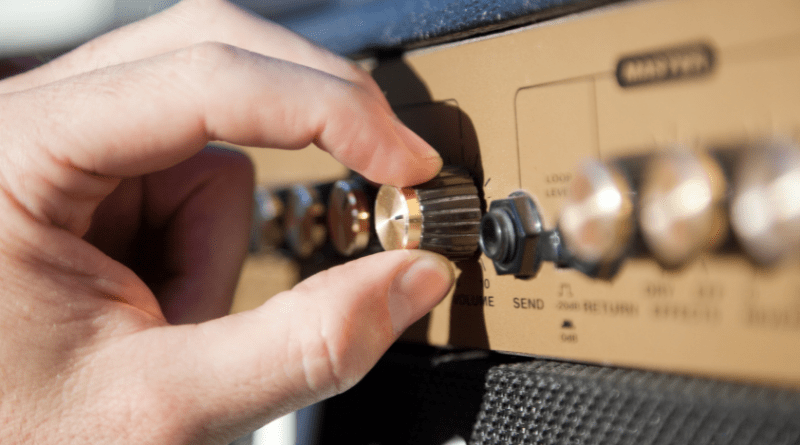When you hear David Gilmour on Pink Floyd songs like “Shine On You Crazy Diamond”, or Phil Collins’ “In The Air Tonight”, you are instantly transported to another dimension. This is not just because of the playing, but the tonality of these songs, which use delays and reverb respectively. These add a certain color to the sound and shape it into something very unique.
No matter what genre of music you play, adding a delay and/or reverb can elevate it to the next level. But sometimes it’s easy to get confused between the two. While a reverb and a delay can be added either to your guitar rig or in post-production when you record your music, it is important to be able to tell the difference between the two.
Read on to find out what exactly a reverb and a delay does, and when to use what:
Contents
What Is A Reverb?
If you walk into a large room with a high ceiling, like a cathedral or church, you will notice that your voice tends to bounce off the walls and reflect back to you. This is an example of a reverb.
Reverb is essentially a soundwave reacting to a physical space and the time it takes for it to decay into silence. It is created when a sound or signal reflects off of a surface and then continues to decrease in amplitude (volume) till it becomes inaudible.
Thanks to technology, we are now able to manipulate the kind of reverb we want. They can be either analog or digital in nature. Some of the most common types of reverb used in music are ‘hall’, ‘chamber’, ‘spring’, ‘room’, ‘plate’, etc.
While there are a few rare analog reverb pedals available today, they can be quite expensive and impractical. Most guitar players prefer using digital reverbs and some of the most extensively used reverbs are Strymon’s BlueSky or NightSky, the MXR M300, TC Electronic’s Hall Of Fame, to name a few. Amps such as the Fender Twin Reverb are known for their ability to add quality reverbs to one’s sound and have been used by legendary guitar players such as Keith Richards, Jimi Hendrix, Eric Clapton, Mark Knopfler, Eric Johnson, and even Jerry Garcia.
Notable Uses Of A Reverb
As mentioned in the intro, Phil Collins’ In The Air Tonight famously uses reverb effects, but other notable uses of this effect include the drum track of When The Levee Breaks by Led Zeppelin, the guitar and amp of Chris Isaak’s Wicked Game, the Talking Heads’ synths on Once In A Lifetime, and even Nine Inch Nails’ Hurt.
But it’s not just rock music, reverb is also used extensively in electronic and dance music. Although one may not realize it, a subtle amount of reverb is always added to a song in post-production to give it a certain level of finesse.
When Should I Use Reverb?
One of the primary uses of reverb is to add depth to one’s sound. So in the context of a song or musical composition, adding a small amount of reverb to melody instruments such as guitar and synths make them stand out and not get lost in the mix.
It is advisable to not any reverb on drum elements such as the kick, or even the bass guitar. Since they are on lower frequencies than the other instruments, it can make the mix sound muddy.
In terms of guitar, reverbs are great during solos because they can add definition and make the instrument stand out from the other elements.
What Is A Delay?
Although similar to reverb, a delay is the playback of a soundwave or audio wave. It occurs naturally when we are on an elevated ground, such as a mountaintop, and shout something out. We hear a duplication of our voice and this is a type of delay known as an “echo”.
A delay can range from a subtle echo (to emphasize certain frequencies) to complete manipulation of the sound, to produce more droney sounds (like in Shoegaze music). Some of the most common types of delay are ‘echo’, ‘tape’, ‘ping-pong’, ‘slapback’, etc.
Like reverbs, delays can be analog or digital. But unlike analog reverb pedals, analog delays such as Electro Harmonix’s Canyon, or the MXR Carbon Copy are extremely popular.
But then, so are digital delays such as the Boss DD-7 and TC Electronic’s Flashback pedal.
Choosing an analog or digital delay pedal primarily depends on what kind of sound you want to create and what genre of music you play.
Notable Uses Of Delay
A subtle delay can be heard on Nile Rodgers’ guitar in David Bowie’s Lets Dance. David Gilmour used the delay to add texture to his sound on songs such as Run Like Hell and Echoes. Many Shoegaze bands such as My Bloody Valentine use a delay to generate a large amount of feedback, making the guitar sound like a completely different instrument, akin to an atmospheric synth layer.
Similar to a reverb, a small amount of delay is usually added to melody instruments in a song or piece of music to make the element stand out. A delay can also be used to create a washed-out effect when the feedback is set to high levels.
When Should I Use A Delay?
In terms of guitar, a delay is often used to make the notes sustain for a long period of time. This works great if you are playing arpeggios in a song and don’t want them to get lost in the mix. Nu-metal and post-grunge guitar players used an echo delay quite commonly to make their guitar parts stand out during softer parts of the song such as verses.
In terms of genre, a delay can complement any clean guitar tone. However, adding a delay with a distorted or overdriven tone can often make it sound incoherent. Delays work best on primarily clean tones.
Shaping Your Sound: Reverb vs Delay
Use a reverb when:
- You want to add character to your guitar sound, especially if there are two guitar parts and you want to give one more definition than the other.
- You are trying to emulate a physical space such as a live club, a small recording room, or even a wooden cottage.
- Playing ballads or slow-tempo music.
Use a delay when:
- You want to clean your mix. Adding reverb to individual elements often makes them sound muddy overall in the song. A subtle delay in melody instruments or vocals can fix this problem.
- You want to add a rhythmic element to the sound. Delays can be used to enhance or add to grooves and can be a great thing to incorporate in guitars and synths.
- You want to manipulate the sound extensively and create new and interesting textures.
How To Mimic Reverb With A Delay Pedal
Professional musicians will tell you that as a beginner, you can use a delay pedal to emulate certain reverb pedal features. This is because they are both time-based effects and thus similar in many ways.
Whether using an analog or digital delay pedal or even a plugin during post-production, setting the delay time between 100-500 ms will yield results similar to using a room reverb. Setting it below 100 ms results in the same smearing problems as a true reverb without the realism it can provide.
Another way to emulate reverb with a delay pedal is by setting the feedback to a moderate level and if possible, cutting the low and high ends of the repeats from the EQ. This works best when using analog tape delays since they operate on limited bandwidth.
Final Thoughts on Reverb vs. Delay
Reverb and delay are usually dependent on each other since they are both time-based effects. This is perhaps why they are used together to create the perfect sound or mix. Together, they lead to sustained notes and added ambiance. They also contribute texturally and can add a level of depth to not just instruments but to the song as a whole.
In a signal chain, the delay and the reverb can be placed interchangeably depending on personal preference and convenience. One can achieve sounds ranging from lush to even dissonant, depending on what you prefer.
They can also be added in post-production digitally, to create the perfect mix.
If you’re yet to check out a delay or reverb pedal in your rig, you’re really missing out, these FX should be a staple on any pedalboard. There are some great options to choose from, at prices to suit all budgets.


